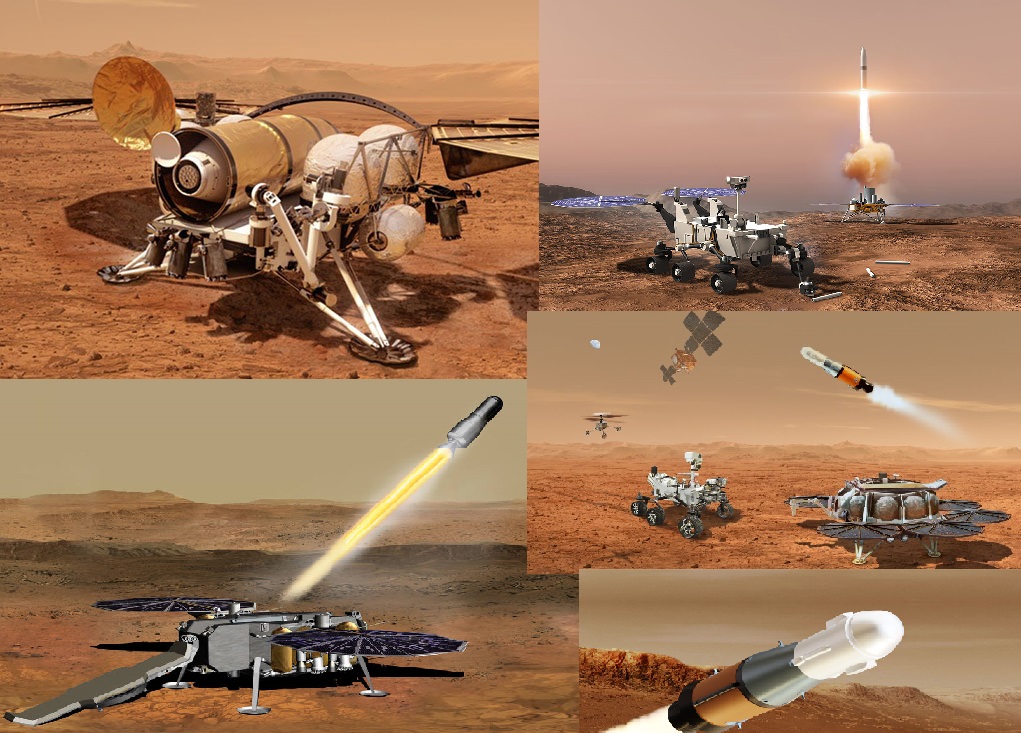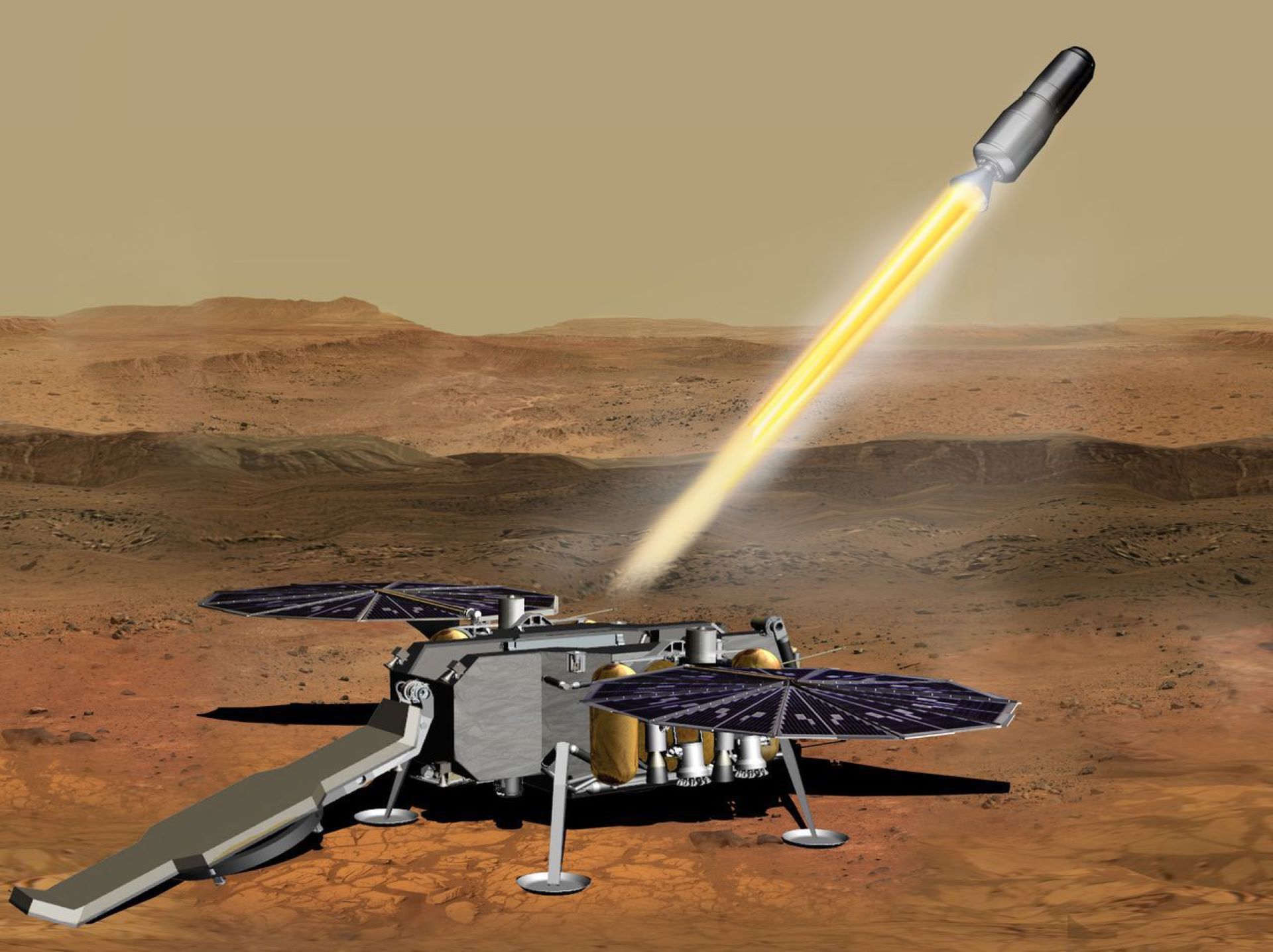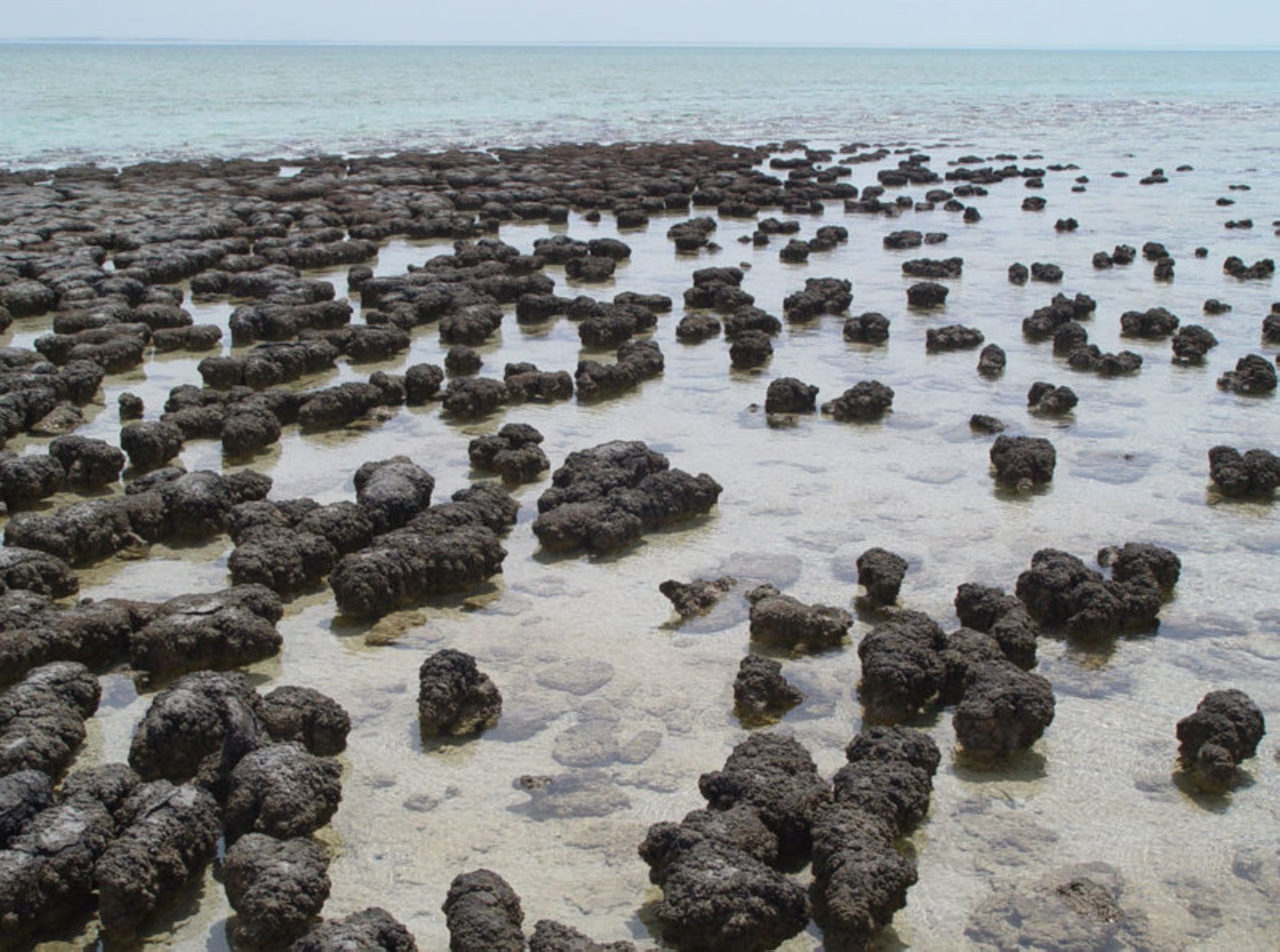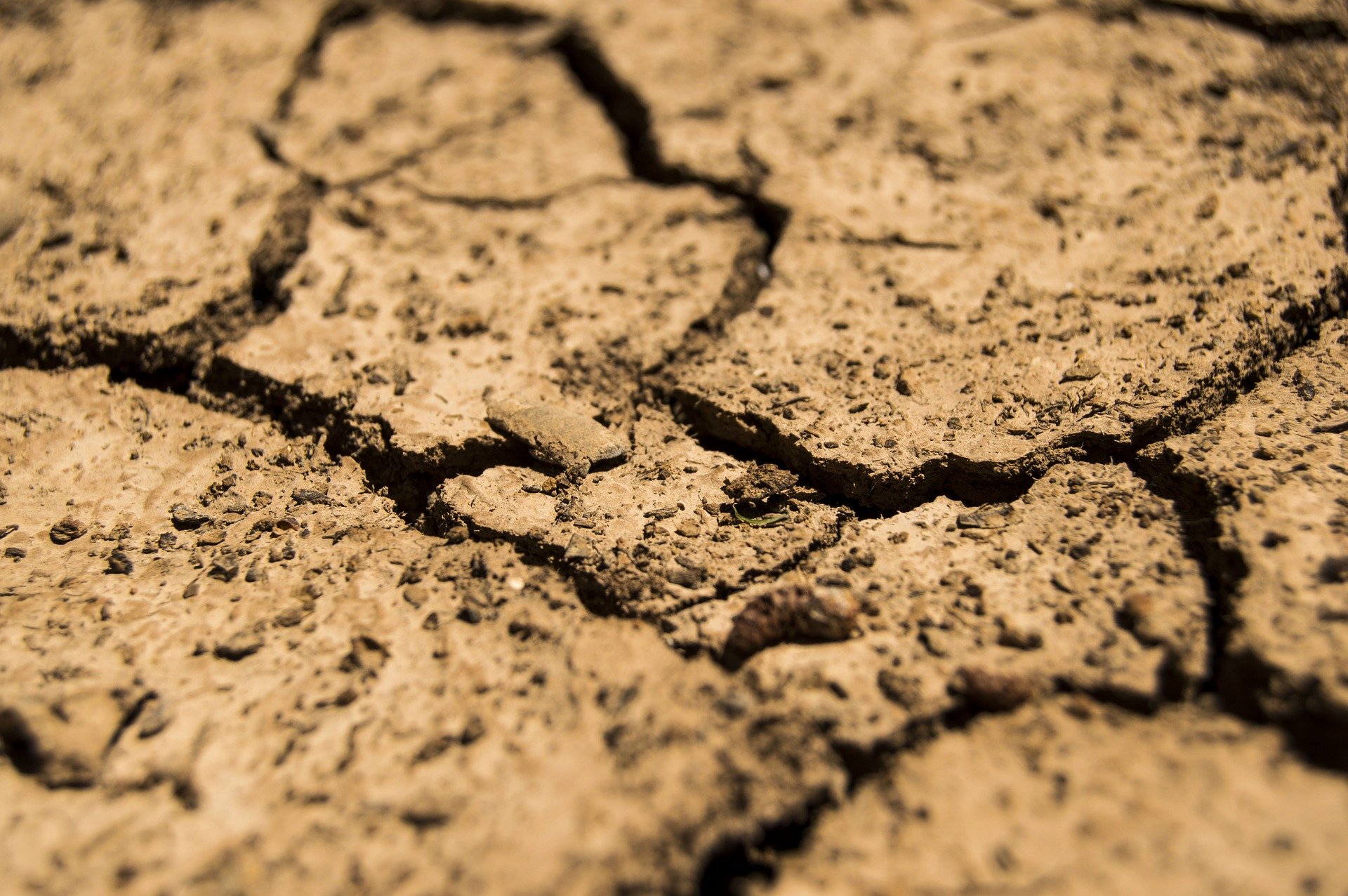Second update 3/3 - What is the status of the Mars Sample Return mission?
In the meantime, we are only a year further. A lot has already happened there on Mars. A second update is required, we write at the end of December 2022.
The Mars Sample Return mission, what did we already know?
Perseverance will conduct research into geological processes and possibly earlier life or investigate the possibility of doing so on Mars. Among other things, Perseverance has to collect soil samples on Mars and leave them in a strategic place. Around 2030, another rover is scheduled to pick up the sealed module (the size of a basketball) with soil samples and bring it to a lander module that will then function as a take-off module a little later. In orbit around Mars, it will deliver the samples in a spaceship waiting there, which will then return to Earth afterwards. That Mars Sample Return mission is a collaboration between NASA and ESA.
The trust in helicopters on Mars is apparently so great that in the future they choose to give helicopters the order to collect the samples . The helicopters have yet to be built and they will be sent during the Mars Sample Return mission around 2030. They will be equipped with wheels and with a two-fingered gripping arm. The use of helicopters would be a huge saving compared to a new robot. It would be about 2 helicopters.
The Mars Sample Return mission, what else have we learned?
Bringing a soil sample from Mars to Earth is in fact not without risk. To ensure that nothing changes to that monster, it must be kept during its crossing under the same conditions as on Mars. So they go for storing the samples under the same temperature and air pressure as is present on Mars. Technically, this will be quite a challenge again. That sealed module the size of a basketball must be specially cared for on the road, but of course also on its arrival on Earth. So they are going to build a lab on Earth that mimics the Martian conditions and that allows the engineers to do their complicated tests in their search for possible life on Mars. Such a hermetically sealed lab must work in the 2 directions: no pollution from Earth to Martian sample, but also no contamination of Martian sample to Earth. There is certainly still work to be done.
The chance that the Martian samples are problematic for life on Earth is considered very small, but it is taken into account. So we watch over the safety of our planet and that also happens in the 2 directions:
- We send terrestrial spaceships to planets, moons and asteroids. These spaceships must not pollute the possible life on site.
- And vice versa, we bring extraterrestrial material to our planet. That material, of course, should not affect our life forms at any point. Fortunately, we have already built up a lot of experience when the Apollo flights landed back on Earth with tens of kilos of moon rocks. There was no question of a possible moon pollution. And so NASA plans to build the safest biolaboratory ever, specifically for the martian soil samples. It should also be said that we already have pieces of Mars in our possession. It is estimated that about 500 kg of Martian meteorites fall to Earth every year. Of course, not all of them are found, but some of them are and of course they have been investigated. So far, no dangers have been found on it.
And still say that the soil samples can only be best examined on Earth. No matter how well equipped Perseverance is, the research centers on Earth can always do a little more. Suppose that traces of life are found, then one will want to see that confirmed several times by independent laboratories spread all over the world. So for this reason alone they must be with us on Earth.
From a documentary by Professor Brian Cox, another bizarre detail emerges. The Mars Sample Return mission is taking shape as the end of the decade is also getting closer. Retrieving those samples will certainly not be child’s play. They always have to be picked up and they always have to be put into orbit around Mars. Then they are picked up there and the journey to Earth can begin. And right now, it’s assumed that that sealed basketball without a descent parachute will crash somewhere in the Utah desert. This rather bizarre detail has everything to do with the technique of flying to Mars for the first time and then to come back later with that same spaceship. In the distant future, such a thing may be solved in a different way. But it must be done within a few years and then the choice is rather limited. For example, it is foreseen that the first spacecraft to pick up the samples will best be launched in 2026. A few years later, the second spacecraft will follow and before it has actually returned to Earth, it will be in the vicinity of 2031.
Three possible results are shown:
- No traces of life are found, a disappointment. Despite the former presence of water, so no life. Yes, then there is a very good chance that we are really alone in our immediate environment.
- We find traces of life and see that it is very similar to ours. We know that meteorites can travel in either direction. So we may have to ask ourselves where did that life originate first, on Earth or on Mars. Or in other words, “Haven’t we been Martians all this time?”
- As a last resort, we find traces of past life and that has a completely different biochemical basis. Then life would have originated separately in 2 places in our solar system. And then it seems logical that where the circumstances are right, life arises. Then we can be sure that we are not alone in the universe. And with that, the most iconic question is answered and still during our lives (let’s hope so) or how lucky we should be.

These illustrations can be seen on the NASA website.






Comments